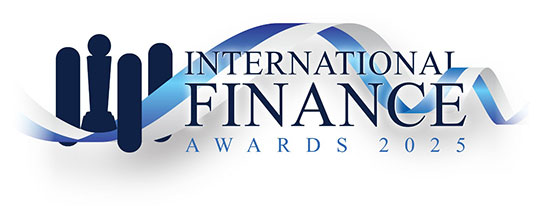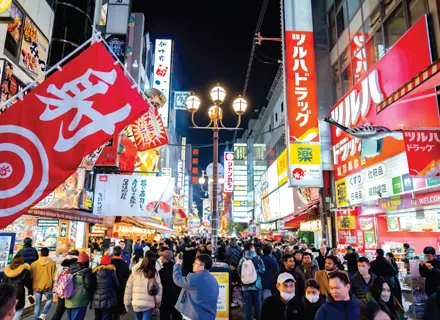Foreign travellers are returning in Japan, lured by a weakening yen, world-class cuisine, and the prospect of an unforgettable vacation in a nation that was previously regarded as a tourism backwater, nearly a year after Japan lifted all travel restrictions related to the pandemic.
According to immigration authorities, 25.8 million foreign visitors were drawn to Japan in 2023, a six-fold increase from 2022. The Japan Tourism Agency claims that they spent a record ¥5.3 trillion (£28.3 billion) together. The government of Japan has set an ambitious target to welcome 60 million tourists and spend ¥15 trillion by the end of the decade.
A sensational comeback
In January 2024, Japan saw the arrival of over 2 million visitors gracing its, marking the eighth consecutive month of such numbers. According to data from the Japan National Tourism Organisation (JNTO), the January tally nearly matched December 2023’s figure of 2.73 million, which had set an all-time high for that month. Both the December 2023 and January 2024 tourist arrival figures remained on par with the 2019 tally. During that year, Japan received a record-breaking 39.9 million tourists.
“While tourism from China remains below pre-pandemic levels, with mainland Chinese visitors once constituting a significant portion, there are positive signs of recovery. Chinese visitors numbered 415,900 in January, representing a notable 33% increase from the previous month. Additionally, Japanese department stores reported robust sales of luxury goods and duty-free items in the first half of February, partly attributed to Lunar New Year celebrations,” TravelBiz Monitor reported.
Both tourist arrivals and spending have remained on a greener pasture for Japan and that bodes well for the nation’s economy. In 2023, visitors surpassed the JYP 5 trillion-mark, exceeding the government’s set target, reinforcing the economic significance of tourism to Japan.
Building upon the success
Japan National Tourism Organisation (JNTO) is now seeking out partnerships with the social media influencers to promote the country’s raw natural beauty. And it’s a strategic move, given the fact that a 2022 survey by the Japan Tourism Agency revealed that relatives and friends (22.8%), social media (21.9%) and video-sharing sites (21.4%) were the top three sources of travel information for foreign tourists.
The government has a goal of receiving 60 million inbound tourists in 2030, with a large chunk of it being the repeat travellers. The goal here is simple; ensure that people are arriving in the country with the goal of conducting offbeat travel. In that way, the already popular tourist spots gets a breathing space, in terms of crowd management, while the less explored ones prosper economically.
A very good example here was South Korean influencer Chomad, who with over a million followers on Instagram and nearly 780,000 on YouTube, posted about his visit to a place in Japan that’s not very well known. The video, which garnered over 37,000 views on YouTube and more than 24,000 likes on Instagram, showed Chomad visiting a small village where he grilled fresh seafood with a group of ama, Japanese female divers who collect seafood from the ocean by free diving without the aid of modern equipment, at the eponymous Ama Hut, an outdoor seafood grill they operate in Mie Prefecture.
Hideki Tomioka, JNTO’s executive director on overseas promotion, told Japan Times that his department had been engaging social media influencers to promote Japan overseas since around 2017.
JNTO’s 26 overseas branches typically invite multiple influencers for every tour, which they organise independently to cater to their specific markets. The same recipe has been picked up by marketing firms, who are now beginning to involve the influencers to promote Japanese products and tourism.
One such is Carta Marketing Firm, which is now offering services utilising influencers for clients including local governments who are looking to target markets primarily in Asia. Ryosuke Sasaki, Carta Marketing’s strategy planner leading the firm’s influencer-related services, said that even within the short time frame since the venture began offering such services from August 2023, they have received an overwhelming reception among its clients.
Within the first three months, the company, which used to primarily take on domestic marketing projects, shifted its focus; now, almost 50% of its projects are ones that target international markets.
Is ‘Over Tourism’ becoming a worry?
A section of the analysts believe that Japan is unprepared for an increase in tourists and this will put additional pressure on lodging, public transportation, and the service sector at a time when the nation is already grappling with a severe labour shortage.
According to Prime Minister Fumio Kishida, sustainable tourism hinges on allowing visitors to arrive without negatively impacting the standard of living for the local population. This is part of his vision for a new “Tourism Nation.” The government in 2023 unveiled plans to increase the number of buses and taxis, increase the cost of public transportation during rush hour, and launch new bus routes.
The subtropical island of Okinawa and rural eastern Hokkaido are among the 20 “model” destinations it has designated in the hopes of luring tourists away from Tokyo, Osaka, and Kyoto, which together accounted for 64% of overnight stays by foreign visitors in the first eight months of 2023. Less emphasis will be placed on consumption and more on immersing oneself in the culture, from learning to meditate in Zen and experience mountain asceticism to crafting sake and pottery.
In the 20 areas, local government officials and residents will draw up plans in fiscal 2024, which started on March of this year, to ease traffic congestion and raise awareness about tourist manners.
The most prominent examples of “Tourism Pollution” can be found in Kyoto, the former capital of Japan and the site of many of the nation’s most well-known temples and shrines, as well as the geisha district of Gion. About thirty times as many people visited Kyoto in 2022 as lived there: over 43 million tourists.
Geisha-themed walking tours are organised by longtime Canadian resident Peter MacIntosh, who told the Guardian that locals have been finding it difficult to reconcile the disruption caused by throngs of visitors with a sharp rise in spending.
To combat the “Tourism Pollution,” the city administration now has restricted walking through the ‘geisha district’. Isokazu Ota, the local district official, told The Associated Press about the installation of warning signs, which will apply mainly to pedestrians, and those who fail to comply with the rules will face a $66 fine.
The ban applies to several blocks of Gion, but the district’s public streets will remain open to tourists. And this is not the first time that Japan has thought about implementing restrictions on tourists. In January 2024, the authorities announced an entry fee for the routes to Mount Fuji.
The tourist destination is dealing with issues like pollution, littering, and unprepared visitors. From July 2024, there will be a daily visitor limit in this destination. Around 4,000 hikers will be allowed to visit the Yoshida trail, but climbers cannot begin their activities between 4 pm and 2 am. To preserve the area further, climbers have also been asked to voluntarily contribute a sum of ¥1,000 ($6.60) per person.
The entry fee to the UNESCO-listed Itsukushima Shrine is ¥100 (53p), and later 2024, visitors visiting the Taketomi islands will have to pay an amount that has not been decided upon to support the preservation of their immaculate beaches.
‘Two-Tier’ charging: A potential solution?
As per Tokyo-based journalist Jay Allen, since more tourists are arriving the country and taking advantage of the weak currency, Japanese businesses are too raising prices. However, since the price hike has been made for both the foreigners and the locals that have left some wondering whether businesses should implement separate pricing model for tourists. Still, the talk of the town is that the businesses must raise their prices.
The Bank of Japan’s policy of pursuing a weak currency has made it harder for those staying in the Asian country to get value from their money abroad. However, foreign tourists are finding their currencies, particularly dollars, going a long way.
“That has some wondering if local businesses shouldn’t jack up prices. After all, many businesses in Japan are struggling to stay afloat thanks to rising prices. And, as the prices at the popular ski resort town Niseko show, tourists don’t seem to mind paying more than locals,” Allen wrote in his article for “Unseen Japan.”
While Tsukiji is already up-charging a bowl of seafood ramen for 5,500 yen ($37), only foreigners can pay this much. The problem here is that Tsukiji, as Japan’s famous seafood market, serves both foreigners and locals. The tourists can pay the inflated price, not the locals.
Analysts are backing a “two-tier” pricing system for the businesses, under which a bowl of ramen that costs 1000 yen for locals would cost 3000 yen for visitors. These experts call it a “reverse discount,” operating similarly to how student and senior discount prices currently work in Japan.
There are examples like golf clubs in Hawaii charging tourists more than double what locals pay. Some Buddhist temples in Thailand also charge tourists for entering, while residents can enter for free.
“The idea has some traction. Loyalty Marketing, which runs the points programme Ponta, asked 1,200 people between their teens and their 60s whether a two-tiered pricing system was a good idea. Over 60% said yes, with the numbers pretty consistent across age groups. People in their 20s agreed the most, with 33% agreeing and 32% slightly agreeing. Those in their 30s and 40s agreed the most, at 35%. Only those in their 60s were slightly sour on the idea, at around 49% with 32% slightly opposed,” Allen added.
Analysts also believe that instead of charging tourists a high price, businesses can go for a “locals discount,” subject to the people producing their proof of residence, while going for an eat out or shopping.
“On the flip side, only businesses in highly trafficked tourist areas would implement the change at first. So, it’d only impact residents who are eating out while at work or on the go. However, once it takes off in tourist traps, it’s hard to see such a change not percolating throughout the country,” Allen noted.
“My initial reaction to the idea of a two-tier system was opposition. The more I think about it, however, the more I think it could be good for Japanese businesses and Japan’s economy in general. The tourism boom shows no signs of stopping, and businesses should strike while the iron is hot,” he concluded.

